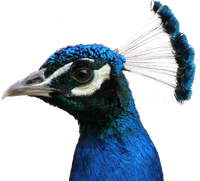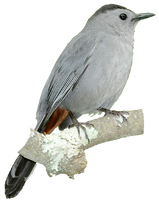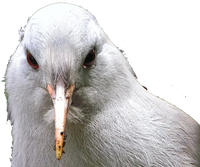mNo edit summary Tag: sourceedit |
mNo edit summary Tag: rte-source |
||
| Line 1: | Line 1: | ||
{{speciesbox |
{{speciesbox |
||
| − | | edit_link = |
||
| color = {{Taxobox_colour|[[Animalia]]}} |
| color = {{Taxobox_colour|[[Animalia]]}} |
||
| genus = Sapayoa |
| genus = Sapayoa |
||
| Line 11: | Line 10: | ||
| image_caption = |
| image_caption = |
||
| image_width = 250px |
| image_width = 250px |
||
| + | | grandparent_authority = Irestedt et al., 2006 |
||
| − | | display_parents = 6 |
||
| + | | parent_authority = Hartert, 1903 |
||
| binomial_authority = Hartert, 1903 |
| binomial_authority = Hartert, 1903 |
||
}} |
}} |
||
| − | The '''Sapayoa''' or '''Broad-billed Sapayoa''', '''''Sapayoa aenigma''''', is a [[suboscine]] [[passerine]] found in lowland [[rainforest]]s in [[Panama]] and northwest [[South America]] |
+ | The '''Sapayoa''' or '''Broad-billed Sapayoa''', '''''Sapayoa aenigma''''', is a [[suboscine]] [[passerine]] found in lowland [[rainforest]]s in [[Panama]] and northwest [[South America]]. |
| + | {{othernames |
||
| − | |||
| + | |english=Broad-billed Sapayoa |
||
| − | |||
| + | }} |
||
| − | |||
| − | ==Other names== |
||
==Description== |
==Description== |
||
The Sapayoa is a small, olive-colored bird, somewhat paler below and with a yellowish throat. Its [[Morphology (biology)|habitus]] resembles a bigger, longer-tailed, broader-billed female [[manakin]]. It is rare to uncommon in the [[forest]] understory, favoring ravines and small streams<ref name = r+t1994>Ridgely & Tudor (1994): p.689, plate 46.</ref>. It is usually seen in pairs or [[mixed-species feeding flock|mixed-species flocks]]. It spends long periods perching, then sallies up to pick fruit or catch insects, on foliage or in mid air, with its flat, wide bill in a way reminiscent of [[flatbill]]s<ref name = r+t1994 />. Other aspects of its biology as late as 2003 were still unknown<ref>Kemp & Sherley (2003)</ref>. |
The Sapayoa is a small, olive-colored bird, somewhat paler below and with a yellowish throat. Its [[Morphology (biology)|habitus]] resembles a bigger, longer-tailed, broader-billed female [[manakin]]. It is rare to uncommon in the [[forest]] understory, favoring ravines and small streams<ref name = r+t1994>Ridgely & Tudor (1994): p.689, plate 46.</ref>. It is usually seen in pairs or [[mixed-species feeding flock|mixed-species flocks]]. It spends long periods perching, then sallies up to pick fruit or catch insects, on foliage or in mid air, with its flat, wide bill in a way reminiscent of [[flatbill]]s<ref name = r+t1994 />. Other aspects of its biology as late as 2003 were still unknown<ref>Kemp & Sherley (2003)</ref>. |
||
| + | |||
| ⚫ | |||
==Taxonomy== |
==Taxonomy== |
||
| − | It has always been considered a [[monotypic]] genus '''''Sapayoa''''' and historically regarded as a New World [[suboscine]]; in particular, it was assigned to the manakin family ([[Pipridae]]). However, the [[species]] was listed as ''[[incertae sedis]]'' (position uncertain) in the [[Sibley-Ahlquist taxonomy]], because |
||
| − | <blockquote>"preliminary DNA-DNA hybridization comparisons [...] indicate that this species is either a relative of the Old World [[Eurylaimidae]] or a sister group of all other [[Tyrannida]], as suggested by earlier biochemical studies [...] In any event, it is not a close relative of manakins or any other recent tyrannoid.<ref>Sibley & Ahlquist (1990)</ref>"</blockquote> |
||
| − | |||
| − | More recent research suggests that it is not a New World suboscine at all, but an Old World suboscine. In 2004, it was shown that the Sapayoa is an outlier to the New World suboscines<ref>Chesser (2004)</ref>. In an earlier analysis based on [[nDNA]] [[myoglobin]] [[intron]] 2 and [[GAPDH]] intron 11 [[DNA sequence|sequence]] data, the authors found the Sapayoa |
||
| − | <blockquote>"as a deep branch in the group of [[broadbill]]s and [[pitta]]s of the Old World tropics<ref name = fjeldsaetal2003>Fjeldså ''et al.'' (2003)</ref>."</blockquote> |
||
| − | |||
| − | Accordingly, the Sapayoa would be the last surviving New World species of a lineage that evolved in [[Australia-New Guinea]] when [[Gondwana]] was in the process of splitting apart. The Sapayoa's ancestors are hypothesized to have reached [[South America]] via the [[Western Antarctica]] Peninsula. |
||
| − | |||
| − | Nowadays, the Sapoyoa is sometimes placed in the family [[Eurylaimidae]] with the broadbills.<ref>E.g. Banks ''et al.'' (2008), Remsen ''et al.'' (2009)</ref> Others tentatively place the Sapayoa in the [[asity]] family Philepittidae<ref>Kemp & Sherley (2003), though it is not clear whether it was Kemp and Sherley or Perrins who decided to include the Broad-billed Sapayoa in the Philepittidae.</ref> otherwise found only in [[Madagascar]] and sometimes included in the broadbill family. |
||
| − | |||
| − | However, the divergence between the broadbills and the Sapayoa found in the 2003 study is only slightly less deep than that between the Sapayoa and the pittas<ref name = fjeldsaetal2003 />. It is even possible though unlikely that the present species is actually closer to the pittas than to the broadbills. Consequently, it is suggested to place the Sapayoa in its own [[monotypic]] [[family]] '''Sapayoidae'''<ref>E.g. Irestedt ''et al.'' (2006)</ref>, as is done here. |
||
| − | |||
| ⚫ | |||
==Behaviour== |
==Behaviour== |
||
Latest revision as of 18:41, 1 July 2016
| Sapayoa | |
|---|---|

| |
| Scientific classification | |
| Kingdom: | Animalia |
| Phylum: | Chordata |
| Class: | Aves |
| Clade: | Inopinaves |
| Order: | Passeriformes |
| Suborder: | Tyranni |
| Infraorder: | Eurylaimides |
| Family: | Sapayoidae Irestedt et al., 2006 |
| Genus: | Sapayoa Hartert, 1903 |
| Species: | S. aenigma |
| Binomial name | |
| Sapayoa aenigma Hartert, 1903 | |
The Sapayoa or Broad-billed Sapayoa, Sapayoa aenigma, is a suboscine passerine found in lowland rainforests in Panama and northwest South America.
| Click for other names | |
|---|---|
| Other common names | Broad-billed Sapayoa |
Description
The Sapayoa is a small, olive-colored bird, somewhat paler below and with a yellowish throat. Its habitus resembles a bigger, longer-tailed, broader-billed female manakin. It is rare to uncommon in the forest understory, favoring ravines and small streams[1]. It is usually seen in pairs or mixed-species flocks. It spends long periods perching, then sallies up to pick fruit or catch insects, on foliage or in mid air, with its flat, wide bill in a way reminiscent of flatbills[1]. Other aspects of its biology as late as 2003 were still unknown[2].
Similar species
Taxonomy
Behaviour
Diet
Calls
Reproduction
Distribution/habitat
Footnotes
References
- BirdLife International (BLI) (2004). Sapayoa aenigma. 2006. IUCN Red List of Threatened Species. IUCN 2006. www.iucnredlist.org. Retrieved on 12 May 2006.
- Banks, Richard C.; Chesser, R. Terry; Cicero, Carla; Dunn, Jon L.; Kratter, Andrew W.; Lovette, Irby J.; Rasmussen, Pamela C.; Remsen, J. V. Jr.; Rising, James D.; Stotz, Douglas F. & Winker, Kevin (2008): Forty-ninth supplement to the American Ornithologists' Union Check-list of North American Birds. The Auk 125(3): 758–768. doi:10.1525.auk/2008.9708 PDF fulltext
- Chesser, R. Terry (2004): Molecular systematics of New World suboscine birds. Mol. Phylogenet. Evol. 32(1): 11-24. doi:10.1016/j.ympev.2003.11.015 PDF fulltext
- Fjeldså, Jon; Zuccon, Dario; Irestedt, Martin; Johansson, Ulf S. & Ericson, Per G.P. (2003): Sapayoa aenigma: a New World representative of 'Old World suboscines'. Proc. R. Soc. B 270(Supplement 2): 238-241. doi:10.1098/rsbl.2003.0075 PDF fulltext Electronic supplement
- Irestedt, M.; Ohlson, J.I.; Zuccon, Dario; Källersjö, M. & Ericson, Per G.P. (2006): Nuclear DNA from old collections of avian study skins reveals the evolutionary history of the Old World suboscines (Aves: Passeriformes). Zool. Scripta 35(6): 567-580. doi:10.1111/j.1463-6409.2006.00249.x PDF fulltext
- Kemp, Alan & Sherley, Greg H. (2003): Asities. In: Perrins, Christopher (ed.): Firefly Encyclopedia of Birds: 421. Firefly Books. ISBN 1-55297-777-3
- Remsen, J. V., Jr.; Cadena, C. D.; Jaramillo, A.; Nores, M.; Pacheco, J. F. Robbins, M. B.; Schulenberg, T. S., Stiles, F. G.; Stotz, D. F.; & Zimmer, K. J. Version [2009-04-02]. A classification of the bird species of South America. American Ornithologists' Union. HTML full text
- Ridgely, Robert S. & Tudor, Guy (1994): The Birds of South America (Volume 2: The suboscine passerines). University of Texas Press, Austin. ISBN 0-292-77063-4
- Sibley, Charles Gald & Monroe, Burt L. Jr. (1990): Distribution and taxonomy of the birds of the world: A Study in Molecular Evolution. Yale University Press, New Haven, CT. ISBN 0-300-04969-2
External links
- Don Roberson's Bird Families of the World
- Avibase The World Bird Database
- BirdLife Species Factsheet
| Projects | ||||||||||||||
|---|---|---|---|---|---|---|---|---|---|---|---|---|---|---|
| ||||||||||||||
| This page uses Creative Commons Licensed content from Wikipedia (view authors). Please help by writing it in the style of All Birds Wiki! |








